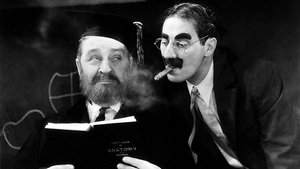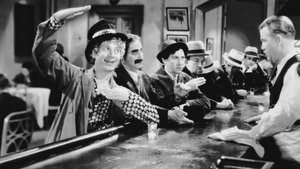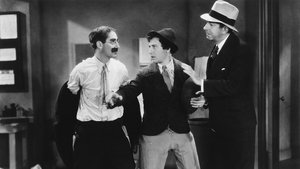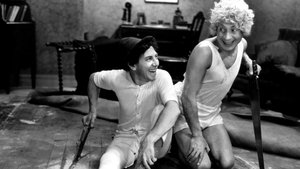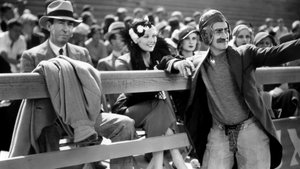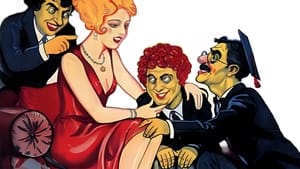Video Sources 0 Views
- Watch trailer
- Horse Feathers 1932 Colorized

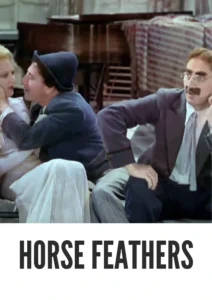
Synopsis
Table of Contents
ToggleCollege Capers and Comedy Chaos: Horse Feathers (1932) in Stunning Color

Dive into the zany world of the Marx Brothers with Horse Feathers, a riotous comedy from 1932, now beautifully colorized for a viewing experience like never before. Starring the incomparable Groucho Marx, this film delivers a non-stop barrage of jokes, gags, and absurd situations within the hallowed halls of Huxley College. Perfect for classic film enthusiasts and those seeking a dose of timeless humor, this HD download brings a beloved piece of comedic history to your screen.
Horse Feathers Storyline: A Hilarious Take on Academia
Horse Feathers tells the story of Professor Quincy Adams Wagstaff (Groucho Marx), who becomes the new president of Huxley College. His unconventional methods and utter disregard for academic norms turn the college upside down.Wagstaff’s antics include hiring incompetent football players, romancing the beautiful Connie Bailey (Thelma Todd), and engaging in hilarious confrontations with rival college teams. With the help of his brothers Harpo, Chico, and Zeppo, Wagstaff creates chaos and mayhem wherever he goes. The film culminates in a surreal and anarchic football game that defies all logic and reason. Ultimately, Horse Feathers is a sidesplitting satire of higher education and a showcase for the Marx Brothers’ unique brand of comedic genius.
Movie Cast
The film features the iconic Marx Brothers and a talented supporting cast:
- Groucho Marx as Professor Quincy Adams Wagstaff
- Harpo Marx as Pinky
- Chico Marx as Baravelli
- Zeppo Marx as Frank Wagstaff
- Thelma Todd as Connie Bailey
Movie Genre
Horse Feathers falls squarely into the genre of comedy, specifically the sub-genre of screwball comedy. Its fast-paced humor, absurd situations, and witty dialogue are hallmarks of the Marx Brothers’ style.
Historical Context: The Marx Brothers’ Golden Age
Released in 1932, Horse Feathers represents a high point in the Marx Brothers’ career, showcasing their unparalleled comedic talents and solidifying their status as comedic legends. The film was produced during a time when Hollywood was embracing sound technology and experimenting with new forms of comedy. Horse Feathers reflects the irreverent and anarchic spirit of the era, offering a welcome escape from the hardships of the Great Depression.
Colorization Details
This colorized version of Horse Feathers has been meticulously restored using modern digital techniques, enhancing the visual appeal while preserving the film’s original comedic timing and charm. The colorization process involved carefully analyzing the grayscale tones of the original black and white footage and assigning appropriate colors to each scene. While the specific software used remains proprietary, the techniques employed included advanced algorithms for color palette selection and image enhancement. This painstaking process brings new life to the characters and settings, making the gags even more visually engaging for modern audiences. While some may debate the merits of colorizing classic films, it introduces these films to a broader audience, ensuring their legacy for future generations.
Technical Details
- Director: Norman Z. McLeod
- Screenplay: Bert Kalmar, Harry Ruby, S.J. Perelman, Will B. Johnstone
- Cinematography: Ray June
- Edited by: Conrad A. Nervig
- Production Company: Paramount Pictures
- Distributed by: Paramount Pictures
- Runtime: 68 minutes
Technical Specifications
- Download Format: MP4
- Resolution: HD (1080p)
- Compatibility: Compatible with most devices, including smartphones, tablets, computers, and smart TVs.
Reviews and Critical Reception
Horse Feathers (1932) is widely regarded as one of the Marx Brothers’ funniest and most iconic films, celebrated for its rapid-fire jokes, surreal gags, and satirical take on academia. Its enduring popularity and influence on comedy make it a must-see for fans of classic cinema. As a timeless example of comedic genius, Horse Feathers continues to entertain and delight audiences of all ages.
FAQs
- Q: What is Horse Feathers about?
- A: Horse Feathers is a comedy about a new college president who turns the school upside down with his unconventional methods.
- Q: Is Horse Feathers (1932) a well-known Marx Brothers film?
- A: Yes, Horse Feathers is one of the Marx Brothers’ most famous and beloved films, known for its hilarious gags and satirical humor.
- Q: Is this version of Horse Feathers colorized?
- A: Yes, this version has been professionally colorized to enhance the viewing experience.
- Q: What makes Horse Feathers so funny?
- A: Horse Feathers is funny because of its rapid-fire jokes, absurd situations, and the Marx Brothers’ unique comedic talents.
- Q: What is the download format?
- A: The download format is MP4, which is compatible with most devices.
- Q: What resolution is the download?
- A: The resolution is HD (1080p), providing a high-quality viewing experience.
Download Now in HD!
Watch Horse Feathers Today!
